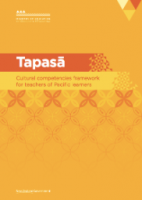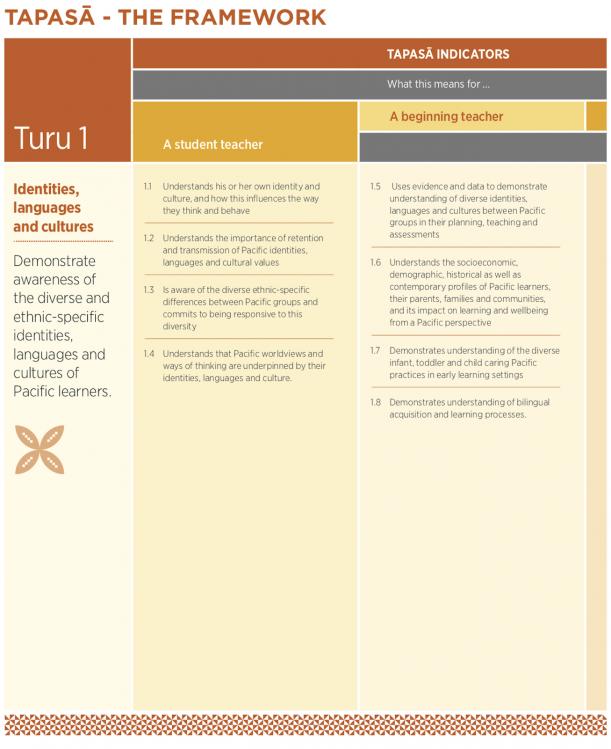What is Tapasā?
Tapasā is a framework and tool designed to build the cultural competencies of teachers and leaders, helping them engage with Pacific learners and their parents, families, and communities to make the biggest difference in a child’s educational success.
The Ministry of Education has developed Tapasā through consultation with Pacific teachers, academics, experts, families, and communities.
“Tapasā is the first step in an ongoing development journey to better understand the identity, language and culture of Pacific people, to connect, collaborate, and co-construct teaching and learning with Pacific children, young people, their parents, families and communities.”
Hon Jenny Salesa, Associate Minister of Education
Who is Tapasā for?
Tapasā is primarily a resource for all teachers of Pacific learners. It is designed to support teachers to become more culturally aware, confident, and competent when engaging with Pacific learners.
Tapasā can also be used by school leaders and Boards of Trustees as a foundation document for:
- strategic and programme planning
- developing local curriculum
- induction, mentoring, and appraisals
- professional learning and development.
Communities of Learning | Kāhui Ako may use Tapasā to help inform Pacific achievement aspirations across their network of educational learning services. Teacher training providers might also find Tapasā useful for the development of culturally responsive programme design.
What does the word Tapasā mean?
Tapasā is a Samoan term that can be loosely translated as a navigation compass and a guide on a journey. This traditional definition of tapasā is applied within the context of the Tapasā framework. Here, tapasā serves a twin purpose of being a guide for teachers as they develop their own cultural competencies, and as a symbol of the learning pathways that Pacific learners and their families take.
What are the features of Tapasā?
Tapasā is structured around three turu, or competencies, that form the framework. These turu are introduced from page 8 of the resource.
-
Turu 1: Identities, languages, and cultures
Demonstrate awareness of the diverse and ethnic-specific identities, languages, and cultures of Pacific learners.
-
Turu 2: Collaborative and respectful relationships and professional behaviours
Establishes and maintains collaborative and respectful relationships, and professional behaviours that enhance learning and wellbeing for Pacific learners.
-
Turu 3: Effective pedagogies for Pacific learners
Implements pedagogical approaches that are effective for Pacific learners.
Within each turu, progressive indicators describe competencies across the stages of a teacher’s career – student teacher, beginning teacher, experienced teacher, and leader. The competencies illustrate what quality teaching and learning looks like within a Pacific learner setting and they are aligned to Standards for the Teaching Profession and Tātaiako.
 Tapasā pg 10,11 pdf (PDF, 177 KB)
Tapasā pg 10,11 pdf (PDF, 177 KB)
How can you use the turu at your school?
- Teachers and leaders at your school could explore the turu of Tapasā during staff meetings, with mentors, or in teaching teams to strengthen their understanding, skills, and knowledge when teaching Pacific learners.
- The competencies within each turu could be unpacked through your appraisal process and used to inform the development and implementation of teachers’ goals or inquiries.
- You could share the turu competencies with your Pacific learners and parents at your next Pasifika fono. What competencies do they think you should prioritise? Are there any additional competencies you could add?
Tapasā includes a selection of scenarios and case studies that reflect the competencies that are represented in ngā turu (from page 16 onwards). These scenarios and case studies support teachers in the development of their practice.
How can you use the scenarios and case studies at your school?
- The scenarios and case studies could be read and discussed at staff and team meetings. A analysis flow chart is provided on page 16 to support teachers in their readings of the scenarios and case studies, and to generate further thinking and discussion.
- Teachers could write their own case studies to help them further understand Tapasā. These case studies would offer exemplars of good practice that reflect your school context.
Guiding questions are provided towards the end of the resource (page 22) to support teachers’ understanding of Tapasā in practice. These questions may be explored collegially or independently and they could spark an idea for a team or individual teaching inquiry.
A comprehensive list of resources, websites, and articles are provided at the end of this resource to help teachers further develop their understanding of Pacific learners, their parents, families, and communities. Page 26 features a list of Pacific based pedagogical models and frameworks that can be used in education settings. On page 27 there are several Pacific research models and frameworks that teachers may find helpful for further research and investigation around getting to know Pacific learners better.
What support will be available for the implementation and use of Tapasā?
The Education Council is leading the implementation of Tapasā. They are putting together an expert teacher group to create a Tapasā implementation plan. The expert teacher group will consider what might be needed to make a suite of professional learning resources to give life to Tapasā and develop strategies to socialise the framework in engaging, meaningful, and digestible ways. The Education Council’s Tapasā webpage will be updated as they develop further professional learning support.
If you would like a digital copy of Tapasā, you can download it here.
If you would like to order a hard copy of the Tapasā booklet, please visit Down the Back of the Chair.
You might like ...
Supporting Pacific learners
This guide from Inclusive Education focuses on culturally responsive strategies to meet the needs of Pacific learners who require additional support.
Pasifika Education Community
This TKI website features resources, research, and stories to help you learn more about effective teaching strategies for Pasifika learners and how to better engage with Pasifika parents and families.





